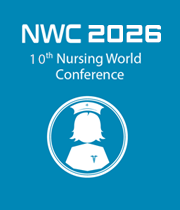Title : A retrospective study on factors contributing to caesarean section deliveries in Maluti Hospital - Lesotho
Abstract:
Introduction: Gibbons et al showed that medically unnecessary caesarean section (CS) can perhaps function as a barrier to universal coverage. Although levels of 10–15% were considered high but acceptable, average CS rates in most developed regions (with the exception of Eastern Europe) nowadays exceed 20%; hence 10%-15% rate recommendation seems to have been overtaken by events. It has been debated that reducing CS delivery rates without looking at other factors might have undesired effects on maternal and foetal outcomes.
Objectives:
- Establish the factors that contribute to caesarean section in Maluti Hospital
- Isolate indications for caesarean section deliveries.
- Inform institutional policies
Methodology: Retrospective and descriptive whereby records of patients who delivered through CS were assessed. The sample was selected using Simple random sampling without replacement (SRSWOR).
The guesstimated population size was 500, with 50% C/S prevalence and 95% confidence level, bearing in mind a 5% margin of error, and 1% design effect were considered. Maluti hospital is known for keeping patients records well. However, 1.03(3%) was factored in to cushion for general representation and this gave a sample size of 224 patients’ files to be assessed, to achieve a good results rate.
Patient’s records were assessed for maternal and foetal variables such the chronological age, gestational age, number of normal vaginal deliveries prior to CS, antenatal clinic attendance to foetal heart rate during labour, presenting part, moulding and caput to mention few. Data analysis was done using epi-info version 7.
Findings:
Chronological age: Majority (34%) of the women who delivered through CS were within the age group of 20-24, 25% was age group 25-39, 19% age 30-34, 12% 35-39 , 15-19 years constituted 9% while 40-44 years 1% of CS deliveries.
Previous obstetric history: Looking at whether the women had had normal vaginal delivery (NVD) before, results showed that majority (59%) had not had NVD before current CS. Results also showed that 22% of the files did not have any information with regard to previous NVD, 12% of women had one NVD, 4% had two NVDs, and 3% had three NVD before the current CS.
Gestational age: Majority (34%) of the files did not have information on the gestational age at CS. The findings showed 1% <32 and ?42 weeks respectively, 5% at 32-33, 10% at 34-35,11% at 40-41, 18% at 38-39, 20% at 36-37 of women delivered through CS.
Indications for CS: Out of 224 files assessed results showed that majority (32%) delivered through CS because of previous scar, cephalopelvic disproportion (CPD) (22.3%), eclampsia/severe preeclampsia (19%), Foetal distress (10%), malpresentation both specified and unspecified (7%). The lowest percentages were found in Antepartum haemorrhage (APH) (4%), genital warts (2.23%), multiple gestation (1.33%), failed induction and placenta insufficiency (0.89%) while uterine fibroids, postdates including prolonged labour were at 0.44%.
Discussion: The findings showed that in Maluti hospital CS rate seem to be above World Health organization (WHO) recommendation, 10%-15%, and most (59%) of women who delivered through CS had not had a chance of NVD. Those who have had previous scar constituted 32%, it was noted that trial of scar for a vaginal delivery for previous CS was not practiced, this was established during data collection as there were no protocols guiding trial of labour for vaginal delivery post caesarean section.
Conclusion: Assessment of women to establish a definite obstetric indication for caesarean section need to be done diligently to help in rationalizing use of CS and avoid unnecessary maternal and foetal complications while containing cost related to CS.
Caesarean section can significantly reduce maternal and perinatal mortality. The World Health Organization considers CS rates of 5–15% to be the optimal range for the provision of life saving interventions for mother and infant; lower rates suggests unmet need, while higher rates suggest improper utilization. However, access to safe CS in resource-limited settings is much lower, estimated at 1–2%.



